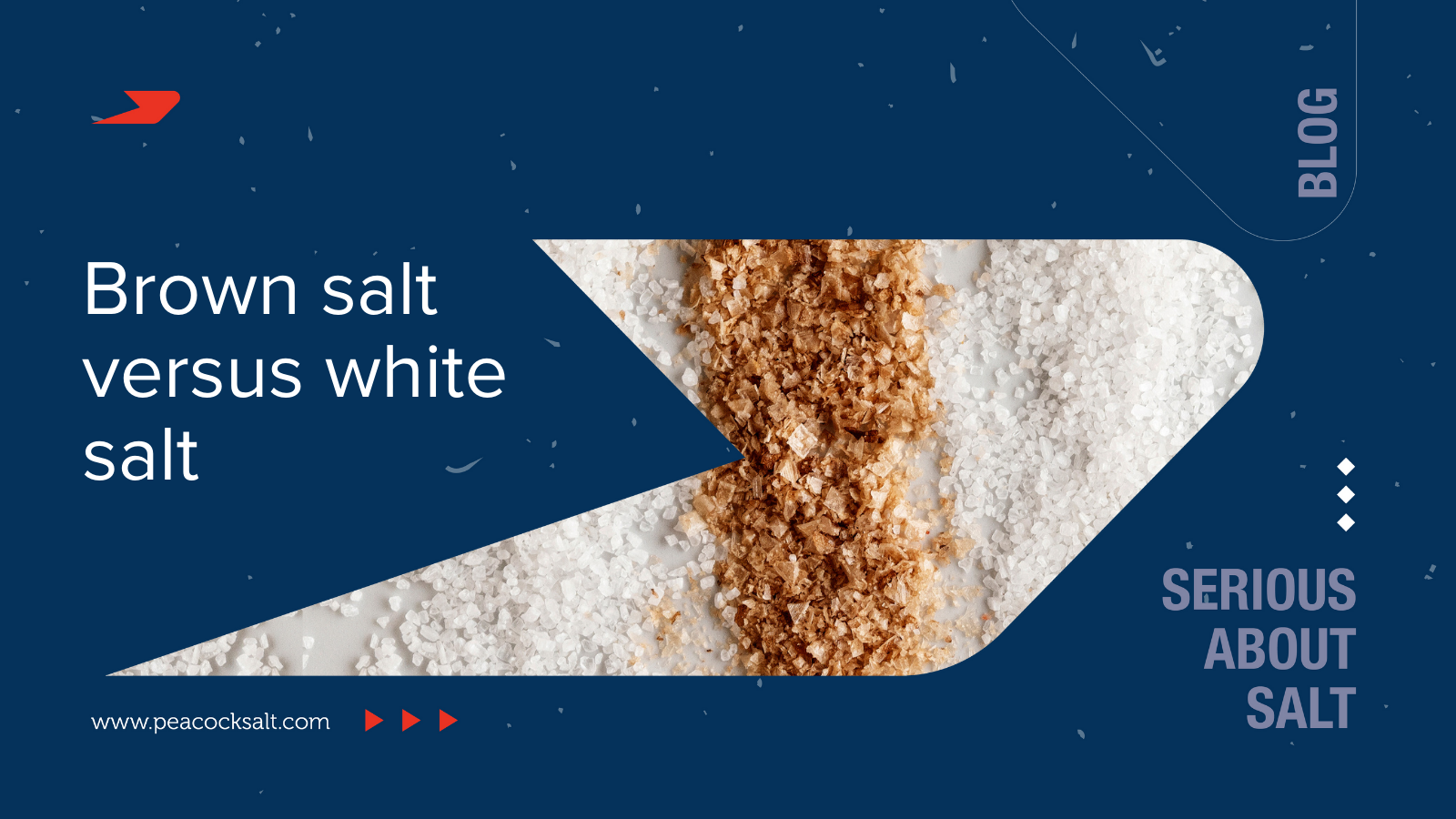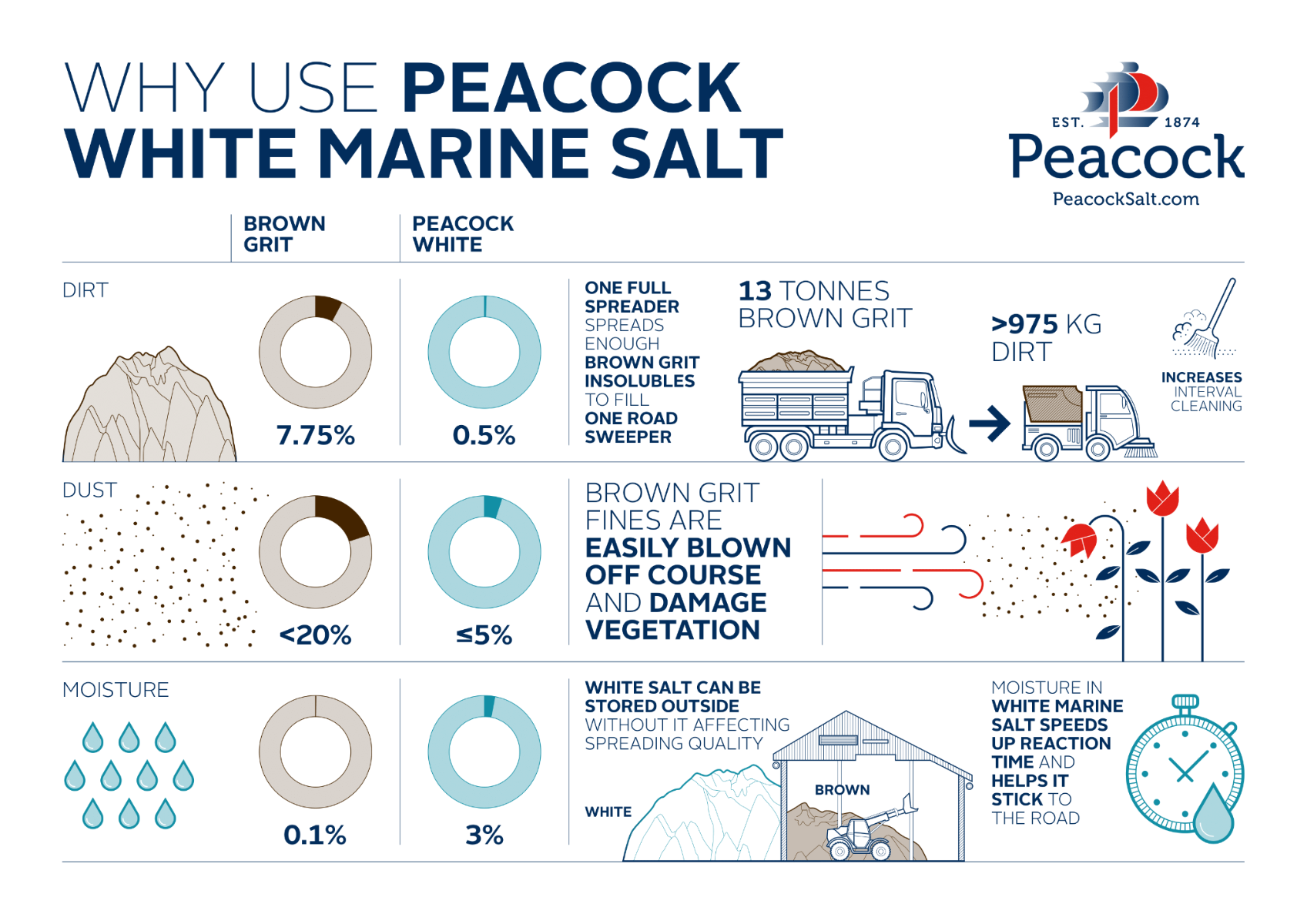
Brown salt versus white salt
Knowing your salt
Summer has gone and we’re now easing into autumn. Surely it feels too early to be talking about winter and freezing weather. But despite Christmas seeming aeons away, knowing your salt cannot come early enough.
The size of the salt mountain
Before we debate the finer points of salt, it’s worth mentioning the statistics. Each year in the UK, two million tonnes of salt are spread on our roads, pavements, and car parks to prevent accidents in icy conditions. Of course, that volume depends on the depths that the mercury plummets to each year, and we all know that our weather is variable, to say the least.
Two varieties of salt
We’re often asked, when it comes to winter gritting and buying the correct salt, “What’s the difference between white de-icing salt and brown salt (also known as ‘grit’)?”
Brown ‘grit’ salt is sourced from one of three indigenous salt mines in the UK – one just outside Belfast, another in Cheshire, and the final mine in Cleveland. Brown salt is also known as ‘rock salt’ as it is mined from underground salt deposits and goes through minimal processing.
Brown salt comprises sodium chloride, as you would expect, but it also contains sand, dirt, grit, and other earthy matter. This increases its grip on slippery roads, but the results tend to be messy. Mud and sludge are left behind to be dragged into buildings, creating an unsightly vision on our roads, adding to the greyness of our dark, cold winters.
White salt is a marine salt, harvested by drying salt water. This salt has a higher purity – the concentration of salt is over 99% sodium chloride and does not contain any of brown salt’s other insolubles. Getting more salt in your granules, white salt has a greater aesthetic appeal and leaves far less mess behind.
How are they used?
With different types of salt come different uses. Highway and local authorities – such as councils, National Highways and Transport Scotland – favour brown salt for their road networks. It is cheaper than white salt as the supply is far greater.
Contractors who cover office or supermarket car parks tend to buy white salt as its spreading reach is more accurate and once applied, it leaves no trace – unlike brown salt. Above all, the use of white salt is favoured for cleanliness and environmental reasons.
The benefits of white salt
Peacock Salt is the UK’s largest importer of white salt and a major supplier for local government, contractors, businesses, and individuals. We’re well-versed in why white salt is often a preferred solution.
Dirt, dust, and moisture: the three edges that white salt has over brown salt. UK brown salt is dirty compared to its European equivalent – despite both coming from the ancient dried-up sea, the Zechstein. Brown grit contains 5-7.5% dirt, yet Peacock white salt contains less than 0.15%.
Extrapolating that out, one full spreader applies enough brown grit insoluble to fill one road sweeper. In numbers, 13 tonnes of brown grit leads to nearly one tonne of dirt. The net result: far more street cleaning, and as the dirt seeps away in the drains, far more waste goes out to sea, at a time when we’re making greater efforts to protect our marine life.

Imagine this: you’re a supermarket retailer, one of the UK’s largest. Your brand is synonymous with quality and your out-of-town shops have convenient free car parking. In the winter though, you opt for brown salt. The resulting slush and sludge hits your brand and pushes your customers into the arms of your competition. Do you really want your shoppers to be greeted with dirt at your entrance because you use brown salt?
The same applies to hospitals. As we’re now more health conscious, possibly because of Covid-19, the sight of brown salt will leave an unfavourable impression on patients wanting a clean environment as they seek care and treatment. The aesthetic of white salt wins every time.
Salt also contains dust, the more dust the more that can be blown off course and damage nearby vegetation. Brown grit, has up to 20% dust while Peacock white salt, the volume is below 5%.
Moisture is another differentiator. Brown grit only contains 0.1% moisture, but Peacock white salt has 3%. Moisture in white marine salt speeds up the reaction time and helps to stick the salt firmly to the surface, melting the ice more quickly and reducing the chance of accidents. White salt can be stored outside without it affecting its spreading quality, saving you vital and costly inside storage.
The buyer
Although you’re a major retailer or a large corporation, you don’t spread salt onto your car parks yourself. A contractor does this for you – so surely this isn’t something you have to worry about? But first impressions count with your customers, and you have the power to decide the type of salt by stipulating this in your contracts with your suppliers.
Peacock Salt is the UK’s largest importer of white de-icing salt and a major supplier of local government, contractors, businesses, large and small and private individuals with salt and winter equipment.
Before autumn ends, should you want a discussion on your salt requirements for the winter months, please get in touch.










